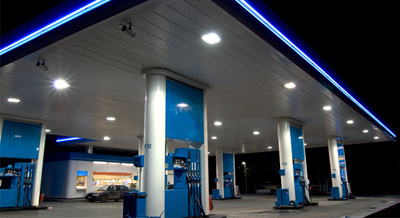March 6 marked the eighth week of price increases at the pump for Washingtonians since the new carbon tax was implemented earlier this year.
The average price of a gallon of regular unleaded was sitting at $4.23 statewide on March 6, up from $4.22 a week prior according to AAA data.
This single cent per gallon increase moved with the national average, which rose from $3.36 per gallon to $3.40 per gallon, a 4 cent per gallon increase, over the same time period.
“The seasonal switch to summer blend gasoline is underway, which may account for this bounce in pump prices,” said AAA Spokesperson Andrew Gross in a statement, “This blend is designed to lower emissions during the summer and is more expensive to refine. Switching to summer blend usually adds about five to 10 cents to the price of gasoline.”
Residents of the Evergreen State have to dig deeper into their wallets than most. Washington’s pump prices again came in at fourth most expensive nationally, being beat out only by Nevada, Hawaii and California, who filled out third to first on the list.
A notable change on that list: For the first time this year, California overtook Hawaii as the most expensive state to fill your tank in.
Washington’s $4.23 per gallon places it 83 cents per gallon higher than the national average of $3.40 per gallon. That is $1.29 per gallon above the nation’s least expensive fuel costs of $2.94 per gallon, currently paid by Mississippi residents.
Another notable change, as Mississippi overtook Texas to become the cheapest state to fuel up, by 2 cents per gallon.
In Washington, intra-state variance remains high at $1.21 per gallon, down slightly from the previous week’s $1.22 per gallon. The outliers, again San Juan and Asotin counties, represented the most and least expensive gas prices statewide at $4.87 and $3.66 per gallon, respectively.
This price variance still largely follows the Cascade Range, with residents to the west paying a higher premium at the pump than residents to the east.
On top of these higher prices, as of Jan. 1 of this year, Washingtonians also have a new cap-and-trade system to pay for at the pump.
According to a report by the Washington Policy Center’s Environmental Director Todd Meyers, gas prices in Washington quickly spiked 10 cents per gallon relative to California and Oregon.
“What the data show is that prices in Washington state jumped suddenly over the last two weeks much more than the other states on the West Coast,” the report stated.
Ultimately, the full impact of the new carbon tax won’t be known until regular auctions occur. The report noted the new law “sets a minimum price of $22/metric ton of CO2, which translates to 17 cents per gallon. The price could go as high as $81/MT which would be 65 cents per gallon.”










Abby Andrews